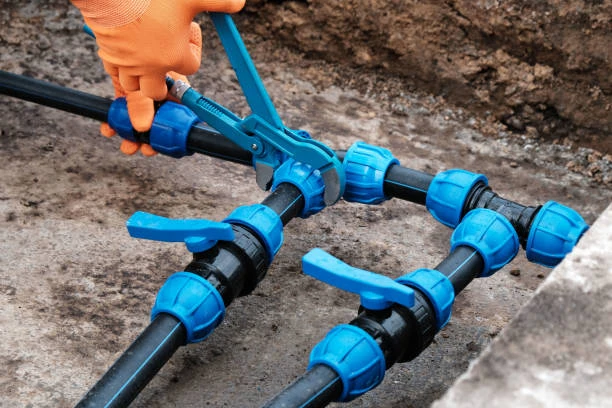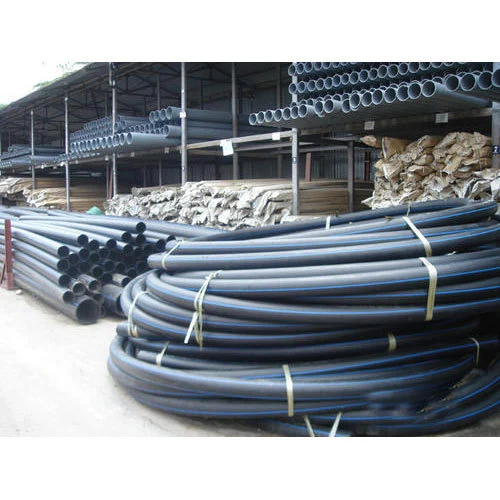Introduction
HDPE pipes and fittings have emerged as a preferred choice in various industries due to their remarkable properties. Governed by the ASTM D3035 standard, these materials offer a combination of durability, flexibility, and chemical resistance. This comprehensive guide will delve into everything you need to know about HDPE pipes and fittings, exploring their features, advantages, applications, installation methods, and maintenance practices.
What is HDPE?
HDPE stands for High-Density Polyethylene, a thermoplastic made from petroleum. HDPE is resistant to impact, corrosion, and UV rays, making it ideal for outdoor use and environments where other materials might fail.
ASTM D3035 Overview
ASTM D3035 is a key standard specification that outlines the requirements for HDPE pipes used in various applications. It ensures that the pipes meet specific criteria for dimensions, material properties, and performance characteristics. Understanding this standard is essential for engineers, contractors, and anyone involved in projects utilizing HDPE piping systems.
Key Features of HDPE Pipes
1. Durability
HDPE pipes are designed to withstand harsh environmental conditions. They have a lifespan that can exceed 50 years when properly installed, making them a long-term investment.
2. Corrosion Resistance
Unlike traditional metal pipes, HDPE does not corrode or rust when exposed to moisture or chemicals. This property makes HDPE an excellent choice for a variety of applications, including sewage systems and industrial piping.
3. Flexibility
The flexibility of HDPE allows it to be bent without breaking, making it easier to install in challenging terrains. This flexibility also reduces the number of fittings needed, minimizing potential leak points.
4. Lightweight
HDPE pipes are significantly lighter than metal pipes, which simplifies transportation and installation. Their lightweight nature leads to reduced labor costs and increased efficiency on job sites.
Benefits of Using HDPE Pipes
1. Environmental Impact
HDPE is a recyclable material, contributing to a more sustainable approach in construction and infrastructure projects.
3. Easy Installation
The installation of HDPE pipes is straightforward, thanks to their lightweight nature and various joining methods. This ease of installation can result in faster project completion times.

Applications of HDPE Pipes
1. Water Supply Systems
HDPE pipes are widely used for potable water distribution. Their non-toxic properties ensure that drinking water remains safe and uncontaminated.
2. Sewer and Drainage Systems
The corrosion-resistant nature of HDPE makes it an excellent choice for sewer systems. It can handle wastewater and other corrosive materials without degrading.
3. Irrigation and Agriculture
In agricultural settings, HDPE pipes are utilized for irrigation systems, allowing for efficient water delivery to crops. Their flexibility makes them adaptable to various landscapes.
4. Industrial Applications
HDPE is also used in various industrial applications, including chemical processing and mining, where resistance to chemicals is crucial.
Types of HDPE Fittings
HDPE fittings are essential for creating a complete piping system. Here are some common types:
1. Elbows
Elbows are used to change the direction of the pipe. They are available in different angles, typically 45 or 90 degrees.
2. Tees
Tees allow for branching off from the main pipeline. They facilitate the connection of multiple lines and are vital for distribution systems.
3. Couplings
Couplings connect two sections of pipe together, ensuring a tight and secure fit.
Installation Guidelines for HDPE Pipes
Proper installation is crucial to maximize the lifespan and performance of HDPE pipes. Here’s a step-by-step guide:
1. Preparation
This includes clearing the area and checking for existing underground utilities.
2. Trenching
Dig trenches according to the specifications outlined in ASTM D3035. The depth and width should accommodate the pipe and allow for proper bedding material.
3. Bedding
A suitable bedding material, such as sand or crushed stone, should be placed to support the pipe. This bedding helps prevent damage during installation and provides stability.
4. Joining Methods
HDPE pipes can be joined using various methods, including:
- Electrofusion: This technique uses an electric current to heat a fitting and fuse it to the pipe, creating a leak-proof connection.
- Mechanical Fittings: These fittings use clamps and bolts to join pipes without heat, providing flexibility in joining methods.
5. Testing
After installation, it’s crucial to test the system for leaks and ensure it meets the required pressure standards. Conducting pressure tests helps identify potential weak points in the system.
Maintenance of HDPE Piping Systems
HDPE piping systems are known for their low maintenance requirements. However, regular inspections are essential to ensure long-term performance. Here are some maintenance tips:
1. Regular Inspections
Conduct periodic checks for signs of damage or wear, particularly at joints and fittings. Early detection of issues can prevent costly repairs down the line.
2. Avoid Excessive Heat Exposure
While HDPE is resistant to many elements, prolonged exposure to excessive heat can weaken the material. Avoid placing HDPE pipes in direct sunlight for extended periods.
3. Check for Obstructions
Ensure that the pipes remain free from obstructions and that the surrounding soil is stable. This helps prevent stress on the pipes, which can lead to failures.
Common Issues and Solutions
1. Sagging Pipes
Over time, HDPE pipes may sag if not properly supported. Ensure adequate bedding and support during installation to prevent sagging.
2. Joint Failure
Improper joining techniques can lead to joint failure. Always follow manufacturer guidelines and use the appropriate fusion methods.
3. UV Degradation
Prolonged exposure to UV rays can weaken HDPE. Use protective measures, such as paint or UV-resistant covers, for outdoor installations.
Future of HDPE Pipes
The future of HDPE pipes and fittings looks promising, particularly as industries seek sustainable solutions. With advancements in manufacturing techniques and increasing awareness of environmental issues, the use of HDPE in various applications is expected to grow.
Conclusion
HDPE pipes and fittings, governed by ASTM D3035, are a superior choice for a wide range of applications. Their durability, flexibility, and resistance to corrosion make them ideal for both residential and industrial use. Understanding their features, benefits, installation methods, and maintenance practices can help you make informed decisions for your projects.
Frequently Asked Questions (FAQs)
1. What is ASTM D3035?
ASTM D3035 is a standard specification for the manufacture of HDPE pipes, ensuring quality and performance.
2. How long do HDPE pipes last?
With proper installation and maintenance, HDPE pipes can last over 50 years.
3. Can HDPE pipes be recycled?
Yes, HDPE is recyclable, making it an environmentally friendly choice.
4. What are the common applications for HDPE pipes?
They are widely used in water supply systems, sewer systems, agricultural irrigation, and industrial applications.
5. How are HDPE pipes joined?
They can be joined using methods like butt fusion, electrofusion, and mechanical fittings.


















